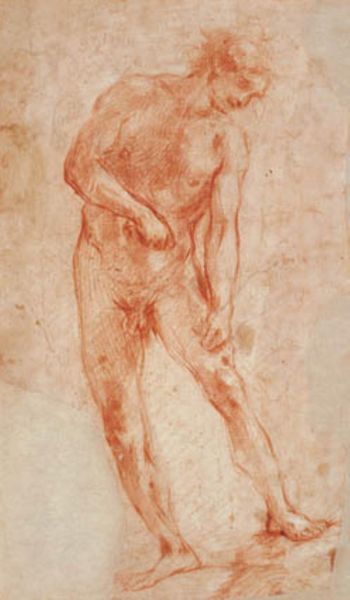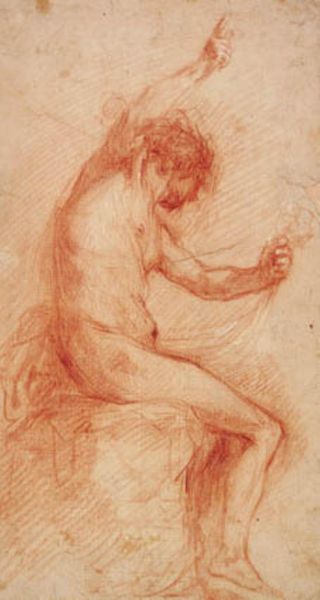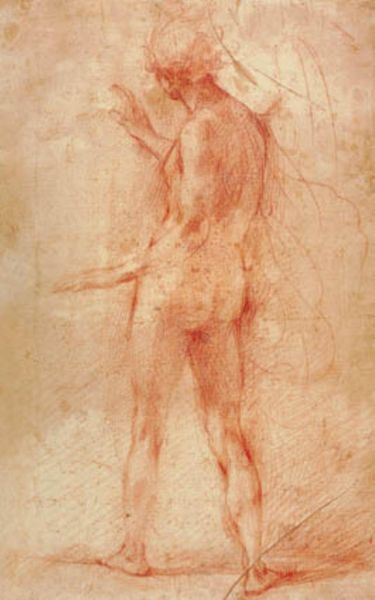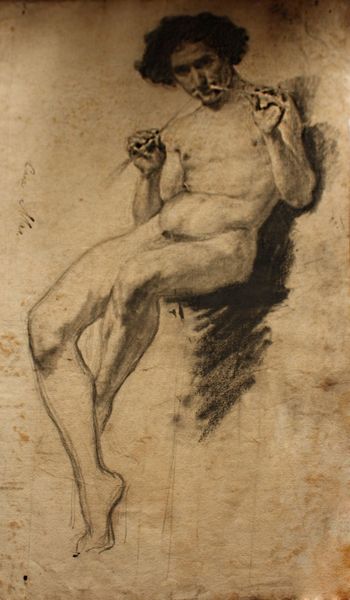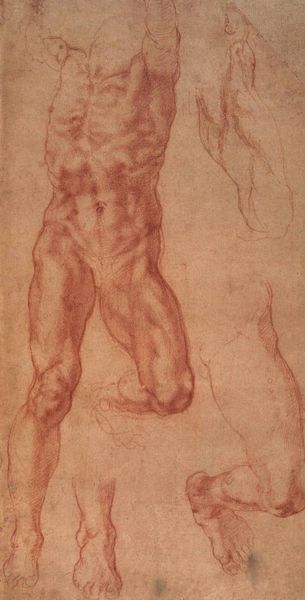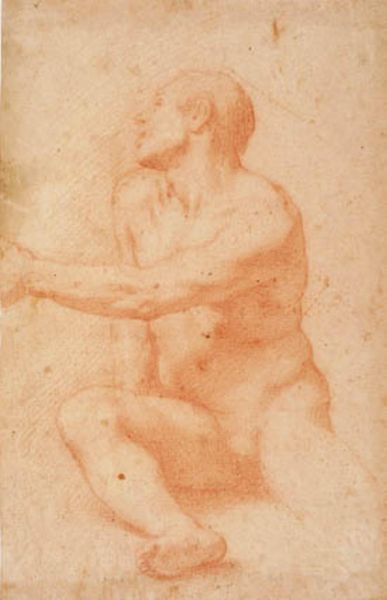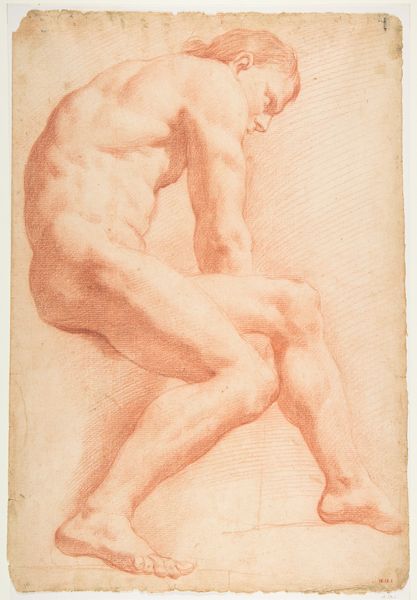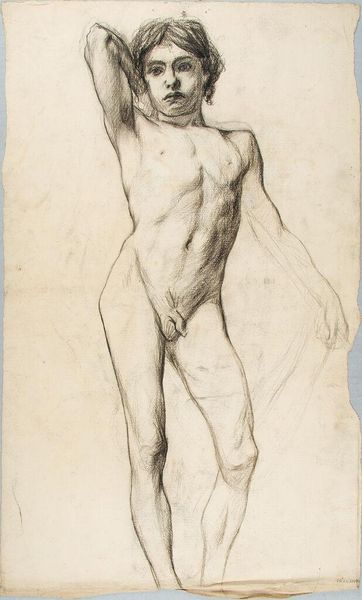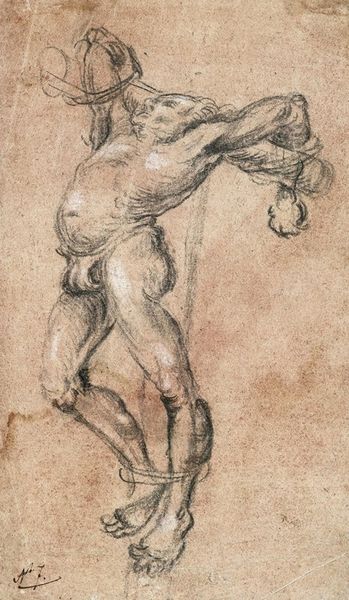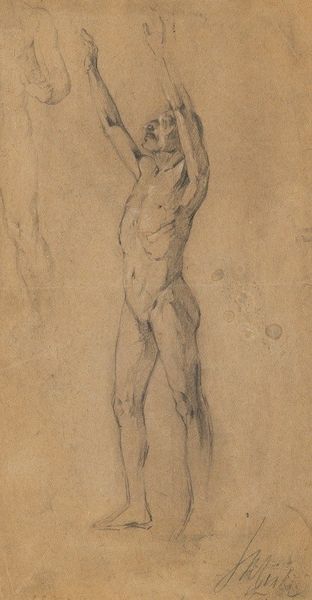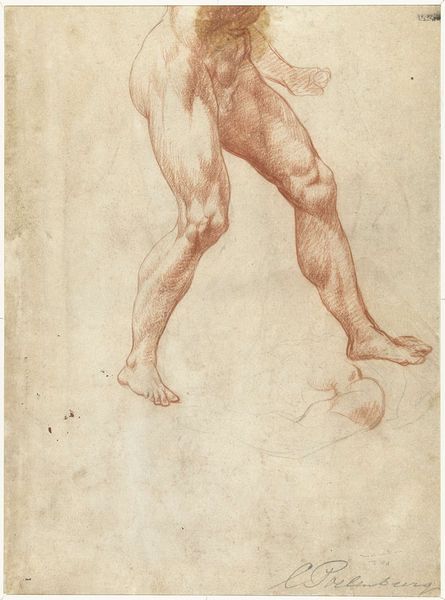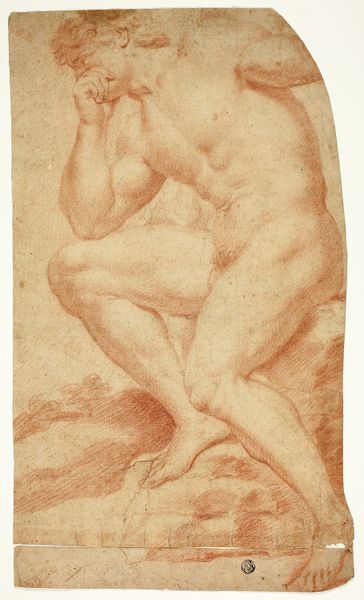
Standing male nude with a staff in profile to the right, and a sketch for his right arm 1691
0:00
0:00
drawing, pencil
#
drawing
#
baroque
#
charcoal drawing
#
figuration
#
pencil
#
nude
Dimensions: 418 mm (height) x 275 mm (width) (bladmaal)
Curator: Here we have "Standing male nude with a staff in profile to the right, and a sketch for his right arm," a drawing by Alessandro Gherardini, dating back to 1691. Editor: My immediate impression is the incredible dynamism of the figure. The red chalk gives him a raw, almost feverish energy, particularly evident in the torsion of his torso and the reach of that raised arm. Curator: The pose is interesting, isn't it? While reminiscent of classical ideals of the male form, there's a certain baroque theatricality to the exaggerated contrapposto, and also the drawing was part of larger social movement for body positivity at the time, during a Renaissance period where artwork depicting nudes grew and grew. Editor: Absolutely. Look at how Gherardini uses line weight—bold outlines defining the contours, softer, more suggestive strokes within the form itself to convey volume and muscle. The preliminary sketch of the arm is especially revealing of his process. He's searching for the perfect articulation. Curator: Exactly, Gherardini was very preoccupied with accuracy when doing these artworks, in comparison with most of the artistic movements in Europe. I wonder how this search for 'perfect articulation' served political powers during the baroque period, what would these 'perfect bodies' say to audiences at the time, I think this artwork is part of a response. Editor: It's more than just a physical study, wouldn't you say? There's a clear attention paid to conveying his humanity. See how Gherardini captures this, perhaps inadvertently. He's muscular, yes, but he has some areas where lines suggest some weight too. Curator: I agree. The image seems both self-aware and aspirational; like looking at this man as his very human self. The decision to portray such figures surely would challenge normative aesthetics dictated by elite taste. Editor: It is quite arresting how the shading seems to recede and emerge in a sort of rhythmic fashion across the form. You notice it particularly in the leg as it meets the torso and rises up to the shoulder. Curator: Considering its context in the baroque era really sheds light on the work's function as more than just aesthetic practice. It seems it became also about a pushback against the established social hierarchy. Editor: From a formal point of view, it's a powerful display of skill—capturing form, light, and a sense of movement, all with that distinctive red chalk. Curator: Yes, thinking about the image now I'm curious to dive even deeper and understand what these "Standing Nude" pieces where about from Alessandro Gherardini.
Comments
No comments
Be the first to comment and join the conversation on the ultimate creative platform.
